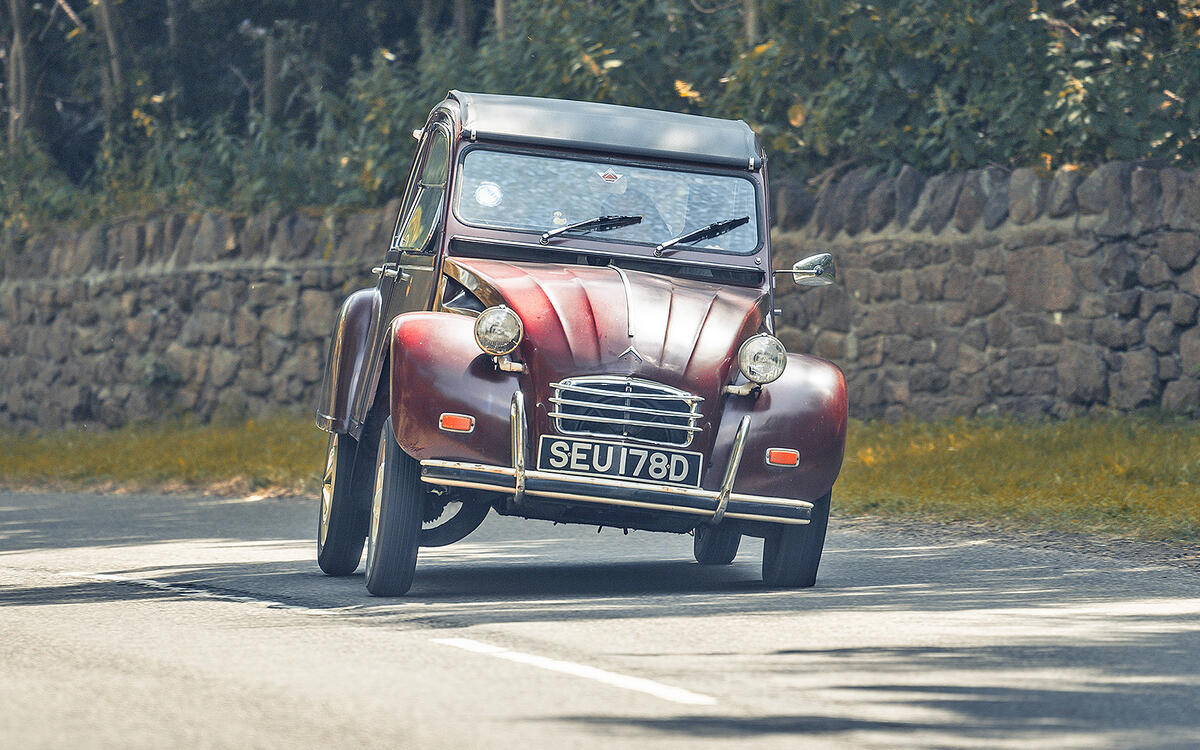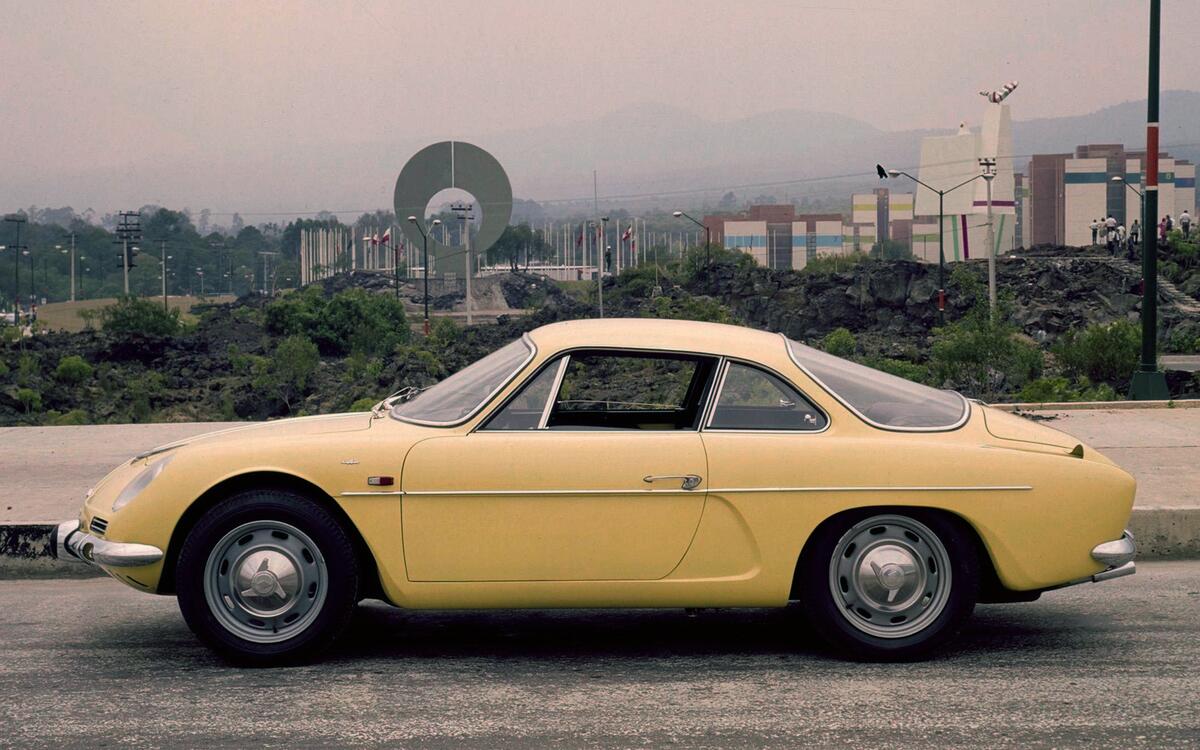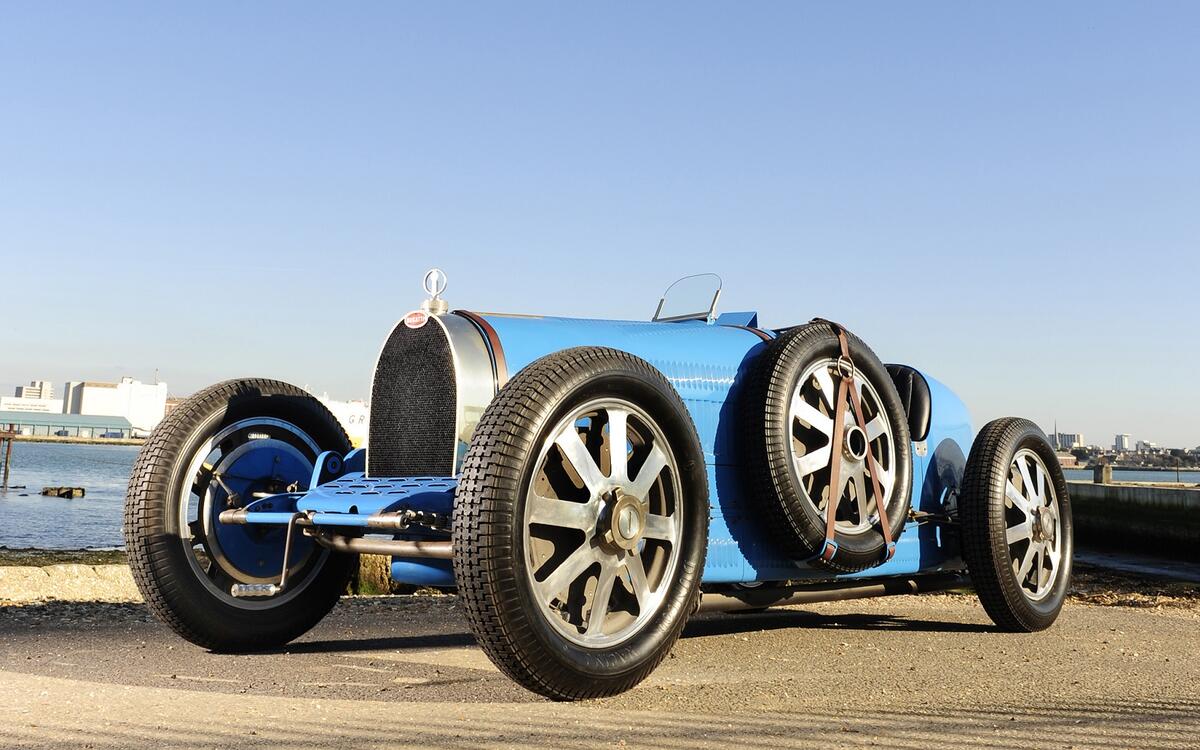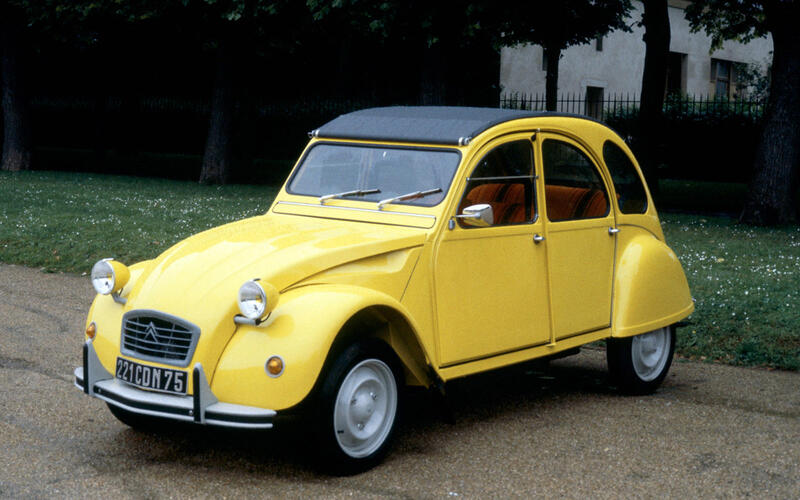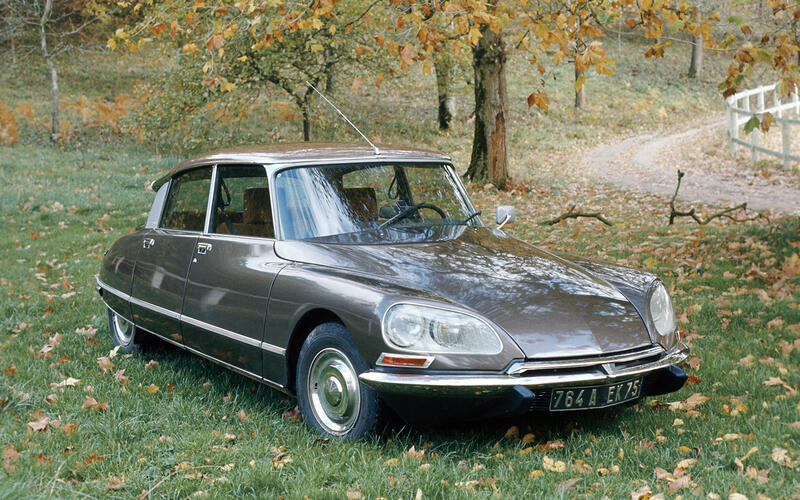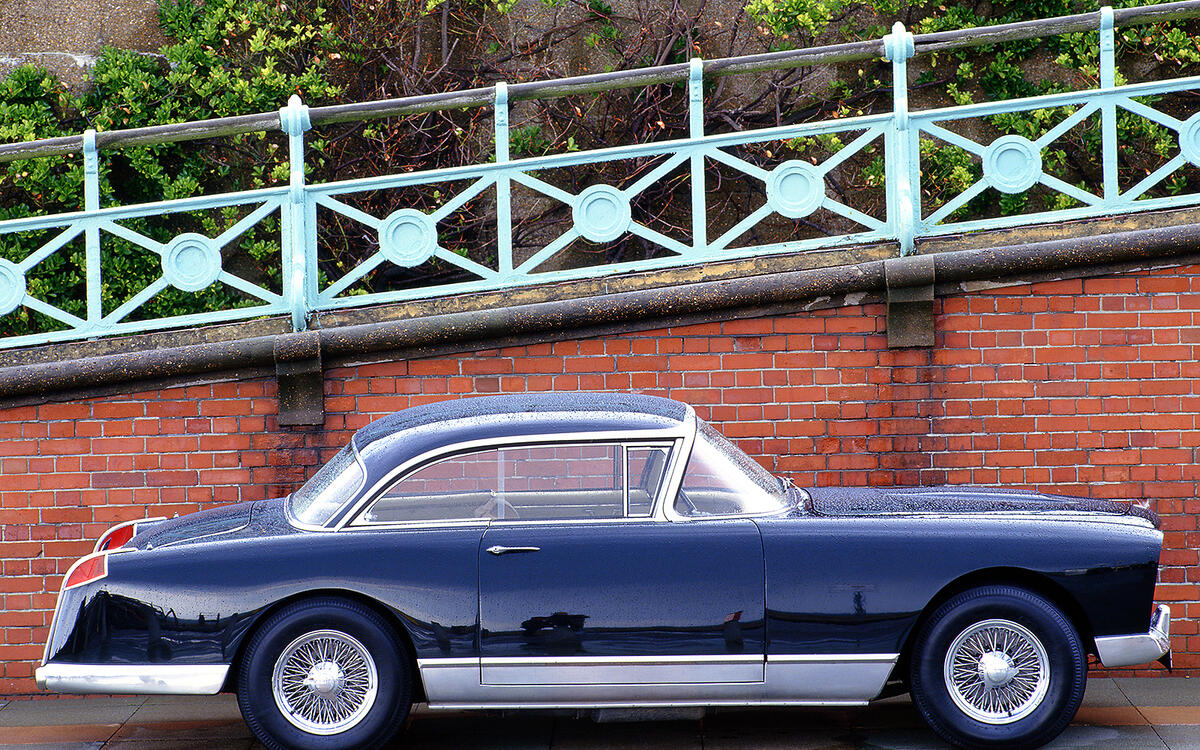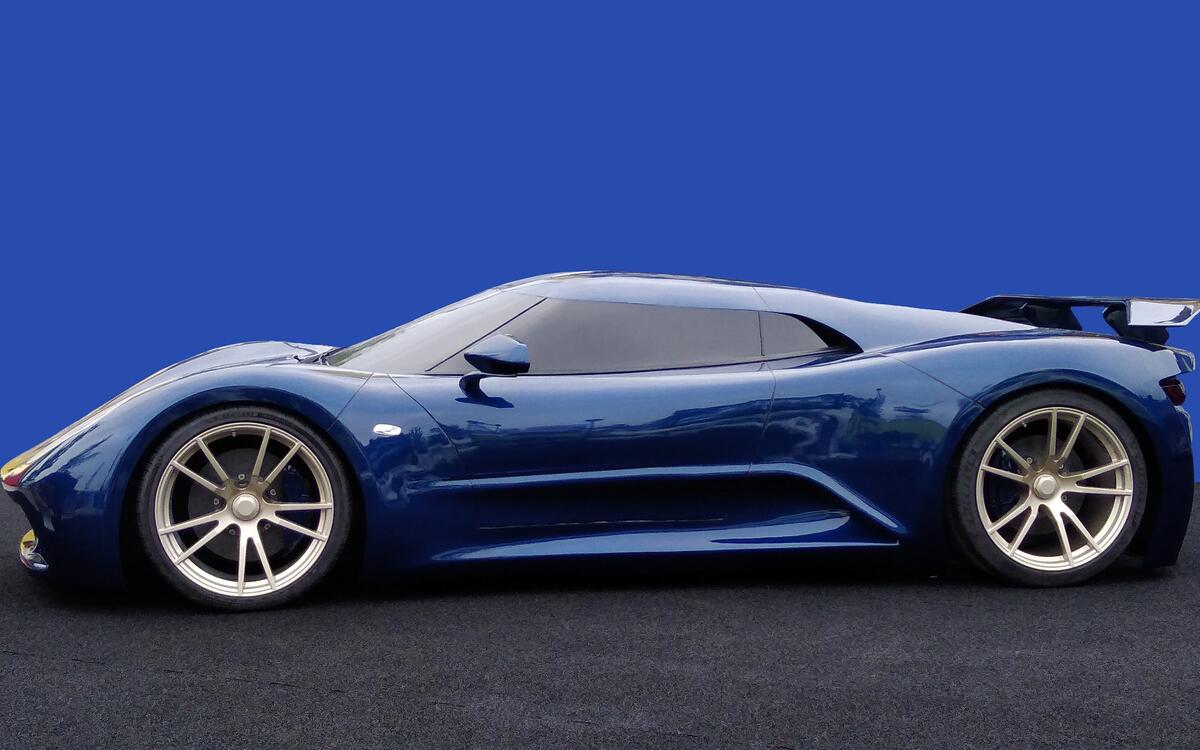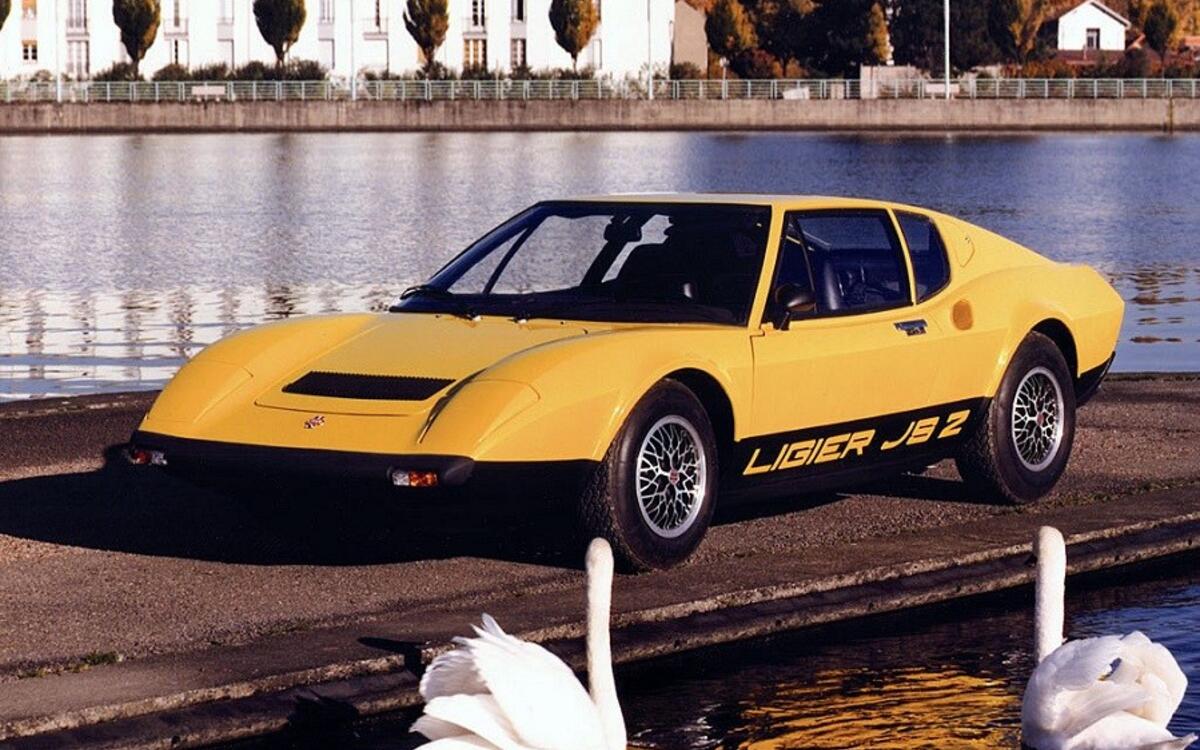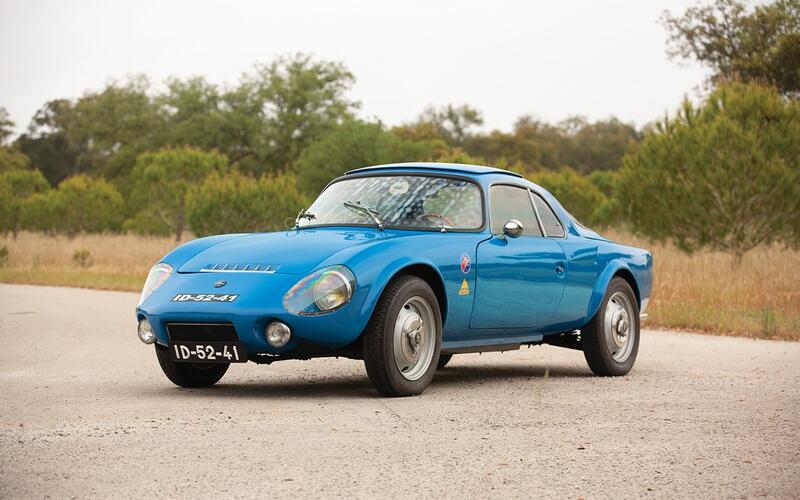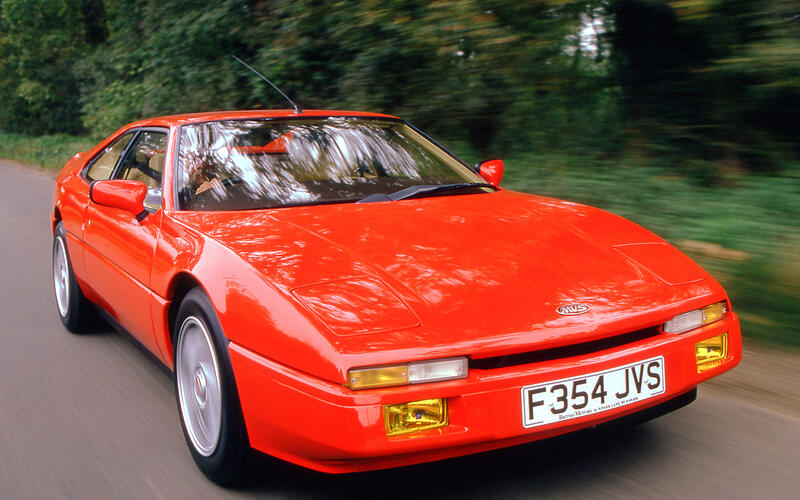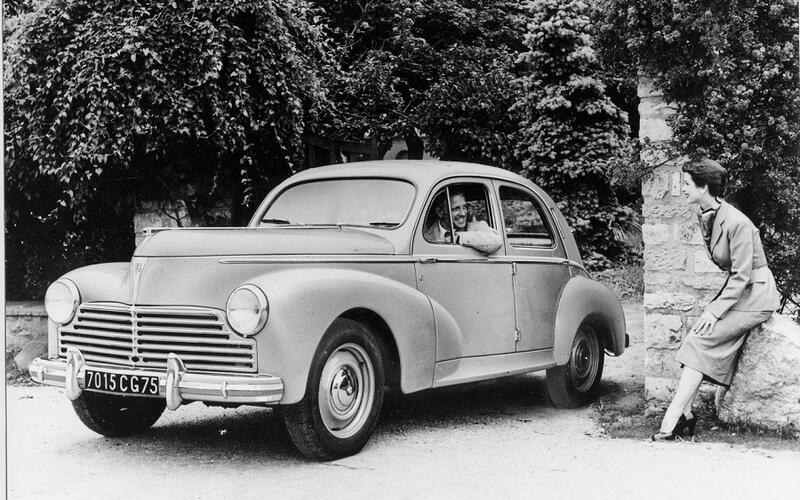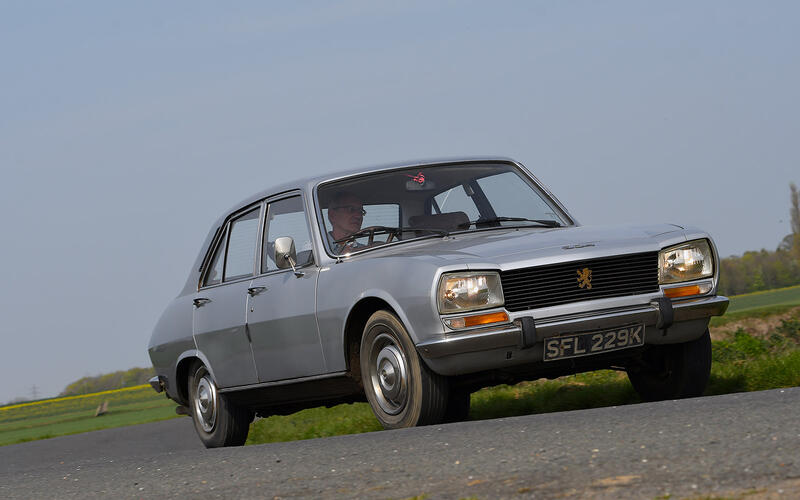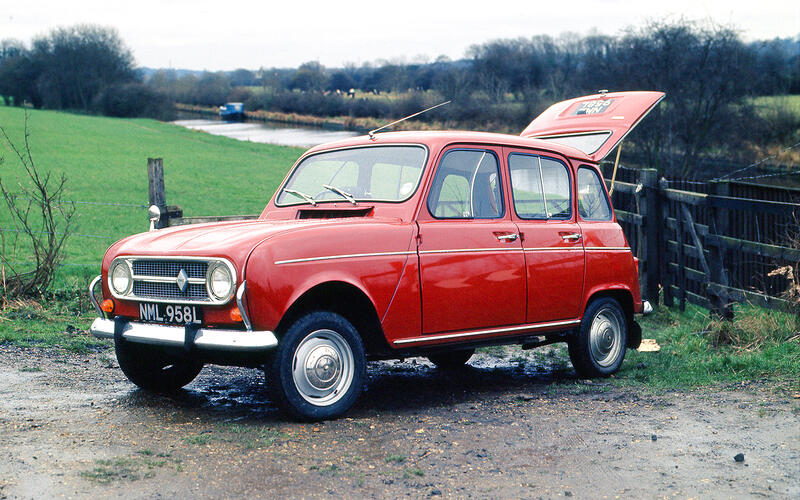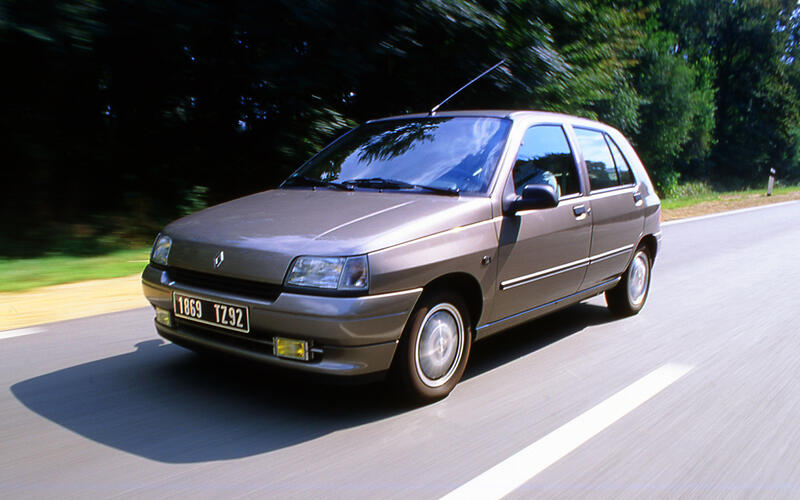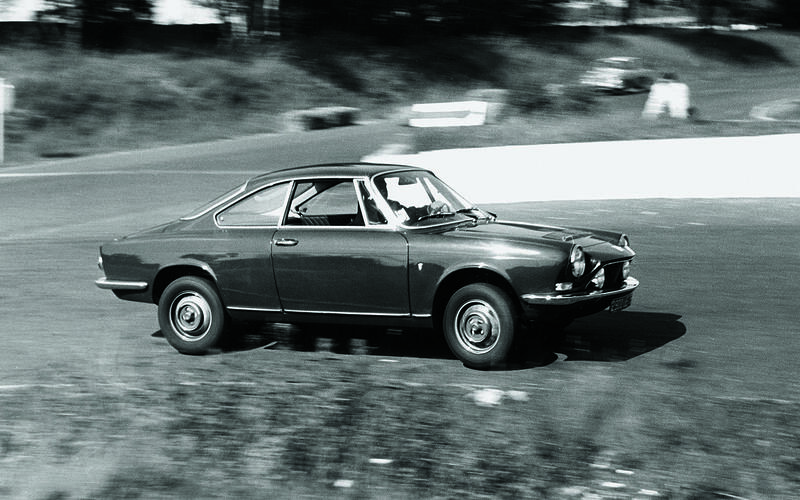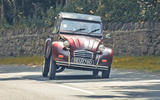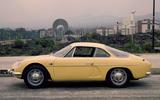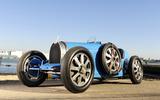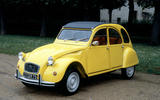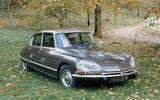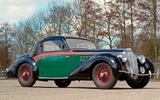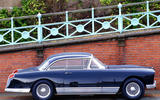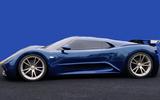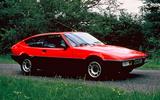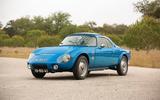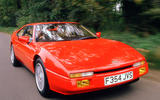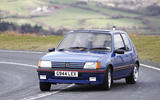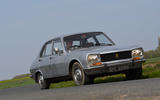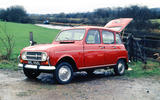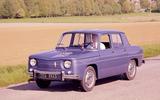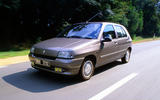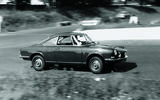 Slide of
Slide of
France has a long history of innovative car design.
It’s led to some of the most exotic and desirable machines, as well as many aimed at delivering motoring to the masses - after all, France was one of the earliest countries to embrace the automobile. Here, we celebrate the best French cars, arranged in alphabetical order:
 Slide of
Slide of
Alpine A110
The Alpine A110 (sold only in Europe at present) we know today as a brilliant sports car owes a huge amount to the original A110 that arrived in 1961. It followed the earlier Alpine A108 that set the mould for this glassfiber-bodied machine. There was a four-seat GT4 version of the A110 built in an attempt to broaden the car’s appeal, but it was the sleek two-seater that became the seminal Alpine model.
Motorsport success came hot on the heels of the car’s launch, with power progressively increasing to a maximum of 138bhp from Renault-sourced, rear-mounted motors. This gave great traction for rallying, though it could also make the Alpine a handful at the limit. Even so, the car endured until 1977, even built alongside the more sophisticated A310, and the A110 was also produced in Brazil, Bulgaria, Spain and Mexico, with 8139 made in total.
 Slide of
Slide of
Bugatti Type 35
Ettore Bugatti’s cars were already establishing a reputation among wealthy owners and racers for their performance and handling when the Type 35 was launched in 1924. It started life with a normally aspirated 2.0-liter straight-eight engine, but competition on the track soon saw that uprated with a supercharger for the 35C models. The 35T was unsupercharged but with a 2.3-liter motor, while the ultimate was the 35B with the bigger engine and forced induction.
The Type 35 in various forms took more than 2000 race wins during its production life and many more since. With up to 138 hp in road trim in a car weighing 1650 lb, it was quick and it handled well. Weight was minimised with cast alloy wheels that incorporated the brake drums, which resulted in the Type 35’s distinctive eight-spoke wheels fitted to most versions.
 Slide of
Slide of
Citroën 2CV
André Citroën may have given his name to the company, but it was Pierre Boulanger (1885-1950) who was responsible for the idiosyncratic 2CV. Conceived before the Second World War, the early prototypes with a single headlight and corrugated bodywork were hidden in barns to avoid them falling into the hands of the German occupiers. By 1948, the production-ready 2CV was launched, though sales were slow to begin with.
However, buyers soon caught on to the 2CV’s supple suspension and simplicity, and it was also built at Citroën’s English factory in Slough. The air-cooled flat-twin engine gradually grew in size and power to a mighty 602cc and 31 hp maximum. Production lasted until 1990, when 3.8 million 2CVs had rolled off the line to put it firmly in the same pantheon as the Mini and Volkswagen Beetle.
 Slide of
Slide of
Citroën C6
There are a number of Citroën models that could fill this space, such as the CX, GS, or XM. Yet the C6 earns its place because it dared to take another path when rivals from Audi, BMW, Jaguar and Mercedes all chose a more conservative route. For starters, the looks of the C6 hailed back to Citroën’s innovative CX, including a concave rear window.
The original C6 design was due to be introduced in 2000, but it took until 2005 before the car reached showrooms. Even before then, President Jacques Chirac had commandeered a pre-production C6 as his preferred transport. It’s easy to understand why when the C6 offered a smooth ride from its electronically controlled Hydractive suspension.
 Slide of
Slide of
Citroën DS
Think of the definitive French car and many will conjure up the Citroën DS. It’s become shorthand for all things chic and Left Bank, yet such cursory notions do the big Citroën a disservice. When it launched in 1955, it was shockingly bold and new in a way not even the excesses of American car styling at the time could match. Its sleek lines were matched by the cleverness of the gas and oil system for the self-levelling suspension that delivered an uncannily smooth ride.
The only thing that held back the DS was the 1.9-liter engine that was carried over from the Traction Avant, but that was later replaced by larger units and, ultimately, a fuel-injected 2.3-liter motor in the DS23. Alternatively, Citroën also offered the cheaper ID that looked the same as the DS but did without the complicated suspension that had caused reliability issues when the car was first sold.
 Slide of
Slide of
Delahaye 135
Delahaye had been making sober and upright cars for years when, in 1935, it suddenly changed direction with the sporty 135. At first glance, the specification didn’t look too promising, with a 3.2-liter straight-six engine taken from a truck dropped into the chassis with 95- or 112 hp. However, the 135 proved quick and strong, and one car driven at Brooklands by Rob Walker became the Fastest Road Racing Car in Britain in 1938.
The 135 continued post-war with a larger 3.6-liter engine, still with the option of a four-speed manual or Cotal pre-selector gearbox. Even by this stage, all 135s were made in right-hand drive – i.e. the wrong side for French roads - as a hangover from pre-war coachbuilt conventions.
 Slide of
Slide of
Facel Vega HK500
Facel Vega was a coachbuilder that branched into full car production in 1954 with its first model, the FV. This style was updated into the definitive HK500 in 1958 which, despite the name came with a 6.0-liter V8 sourced from Chrysler in the US. With as much as 360bhp, the HK500 was one of the most powerful cars available in Europe at the time. However, early models made do with marginal drum brakes before front discs arrived in 1960.
Performance was not the HK500’s main focus, however. It was a luxury GT and the cabin reflected this with its opulence, though the large dash that had the look of walnut wood was actually a sheet of painted metal.
 Slide of
Slide of
Genty Akylone
There are plenty of hypercars unveiled that aim to unseat the names such as Ferrari and McLaren, and one of the very few from France is the Genty Akylone. With a claimed top speed of 220mph and 0-62mph in 2.7 seconds, the figures are in the right neighbourhood. So is the 1200bhp from a twin-turbocharged 6.0-liter V8, which Genty reckons sees its car from rest to 186mph in 2.5 seconds, less time than a McLaren P1.
Development of the Akylone is still underway, with a view to launching a production version in 2022.
 Slide of
Slide of
Ligier JS2
Ligier is more often associated with motorsport than road cars, yet the JS2 was aimed firmly at road-going customers by former racing driver and ex-rugby international Guy Ligier. It used a simple, strong steel tub with glassfibre body over the top that was reminiscent of the Alpine A110. Launched in 1970, it used the 2.7-liter V6 engine form the Citroën SM, though prototypes used a Ford V6.
The JS was named after racer Jo Schlesser, a close friend of Ligier’s. Only 150 JS2s were made between 1970 and 1977, largely due to its price and Ligier focusing on racing activities instead of marketing its road car.
 Slide of
Slide of
Matra Bagheera
The Matra Bagheera earns its place among the best French cars built not because of its rip-roaring performance. What sets it apart was its innovative design. For starters, it was an early adopter of the mid-engine configuration for road cars yet it managed to seat three adults across the cabin in comfort. It also used composite body panels hung on a steel spaceframe.
That chassis gave the Bagheera excellent handling along with its independent torsion bar suspension. If only the Simca-derived engines had been more powerful and refined, the Bagheera would have been a sensation. As it was, it still sold 47,802 examples during its production span from 1973 to 1980.
 Slide of
Slide of
Matra Djet
A very pretty car, the Matra Djet was another French sports car to use the Renault 8 engine and gearbox to good effect, just like the Alpine A110. In the Djet, it developed a modest 72 hp, but the glassfibre body helped keep weight to a total of just 1353 lb for the tiny Matra coupe.
Designer René Bonnet’s background in aerospace engineering was obvious in the construction of the Djet, but this also made the car too expensive to gain sufficient sales to be profitable. In the end, 1681 Djets were made and it helped catapult Matra into the major leagues of Formula 1 and endurance racing.
 Slide of
Slide of
Matra-Simca Rancho
The French are one of best at making simple cars out of vans, yet the Matra-Simca Rancho was so much more than the sum of its parts. Based on the unassuming Simca 1100 VF3 van, the Rancho gained rear seats, windows and all manner of off-road cues, including spotlights mounted at the base of the windscreen.
There was no four-wheel drive or even big wheels and chunky tyres. Yet what the Rancho lacked in dirt-busting capability, it made up for in stylish swagger and buyers loved it. The dreary 1.4-liter gasoline engine was slow, but 56,700 people chose the Rancho between 1977 and 1984 to justify the firm’s belief in creating the first crossover.
 Slide of
Slide of
MPM Erelis
Among the many French cars that deserved to do better, the MPM Erelis is one of the most worthy. Designed as a four-door coupe, it is not aimed at high-spend buyers but those with more modest means and the entry price of €16,500 ($20,140) pitches it alongside many mainstream offerings.
Powered by a 132 hp 1.2-liter turbo gasoline engine from PSA, the Erelis makes the most of its low power by being around 25% lighter than cars of comparable size. This has inspired MPM to create a one-make race series for the Erelis and the company is also developing an SUV and electric city car to expand its range.
 Slide of
Slide of
MVS Venturi
France’s answer to the Porsche 911 was the often used line about the MVS Venturi and its Atlantique successor, yet it had more in common with the Lotus Esprit. For starters, the MVS cars were mid-engined and two-seaters, and their bodywork was made of composites over a steel chassis. The comparison to Porsche certainly didn’t stand up in sales terms, with only around 750 cars of both types sold.
The Venturi 260 was fast, with 168mph and 0-62mph in 5.3 seconds, while the Atlantique delivered 171mph and 4.9 seconds for 0-62mph. Power came from a turbocharged version of the PRV (Peugeot-Renault-Volvo) 3.0-liter V6 engine, though this was quite a heavy unit and didn’t help the handling.
 Slide of
Slide of
Peugeot 205 GTI
Greatest French car ever? The Peugeot 205 GTI is certainly in with a shout given that almost every hot hatch since has been compared to this icon of the 1980s. It started with a 106 hp 1.6-liter engine that worked with a kerb weight of only 1771 lb to make it rapid and exceedingly agile. The more potent 132 hp 1.9-liter engine made the GTI faster, but some argued it lost a little of the 1.6’s finesse.
Peugeot softened the suspension slightly later in the 2.5 GTI’s life to counter criticisms of its tail-happy handling if the driver lifted off the throttle mid-corner. Even so, no other hot hatch of the era came close to the thrill of a 205 GTI driven flat out. On sale in 1984, a Pininfarina-designed and part-built convertible called the CTi arrived in 1986.
 Slide of
Slide of
Peugeot 203
Peugeot was clearly influenced by American car styling when it penned the 203 that arrived in 1948. Its full width front end and sloping rear roof line were in stark contrast to the upright design of most rivals.
Underneath the body, the 203 was even more ground-breaking as it came with hydraulic brakes that were a novelty in this class. It also has coil spring independent front suspension, rack and pinion steering, and even an all-synchromesh gearbox from 1954. All radical stuff for the period, and the engine continued this theme with its alloy head and revvy nature that helped make it a regular rally winner.
 Slide of
Slide of
Peugeot 504
The 504 was Peugeot’s replacement for the ageing 404, though the two were in production alongside each other for some seven years. A very modern large saloon with disc brakes all-round and the option of a fuel-injected engines from the start, the 504 was also offered as a vast estate in standard Commerciale and eight-seat Familiale forms.
Styled by Pininfarina, the Italian firm went on to build the 504 Coupe and Cabriolet that was offered with the 1,8- and 2.0-liter gasoline engines. These models were the first to be fitted with the PRV Douvrin V6 engine.
 Slide of
Slide of
Renault 4
 Slide of
Slide of
Renault 8
It may have seemed very conservative in its styling when launched in 1962, but under the skin the Renault 8 was an interestingly advanced machine. When most rivals still had drum brakes, the Renault had discs all-round. The suspension was all independent, and there was the option an automatic gearbox with shift buttons on the dash.
Most 8 models made do with humble engines of up to 53 hp, but the racy Gordini version gained a 90 hp motor, while the last 1300 model had a whopping 103 hp. Not bad in a car that weighed only 1877 lb. The Gordini was only sold in blue with white stripes, and also featured spot lamps and a brake servo to help it stop better.
 Slide of
Slide of
Renault Clio
It would be just as easy to choose the Renault 5 in place of the Clio, but the newer car wins out for the dynasty it has spawned. The name badge is still in production more than three decades on from its launch in 1990 and shows no signs of its popularity waning. It was offered in three- and five-door shapes with various gasoline and diesel engines.
The most memorable Clio of the first generation is the Williams model, with 2500 built originally to qualify the car for Group A motorsport applications. Buyers of these cars got a little upset when Renault cashed in on the Williams’ success with not one but two follow-up models to produce a total of 12,100 Clio Williams.
 Slide of
Slide of
Simca 1200S Coupe
The transformation from bolt upright Simca 1000 saloon to coupe was nothing short of breath-taking, so no surprises it was styled by Bertone. The Italian firm also assembled the bodies before shipping them to France on specially adapted train wagons for completion.
Initially, the 1000 model felt underpowered, so the upgrade to the 1200S model (pictured) in 1967 was welcome and brought power up a useful 62% to 80 hp from the earlier car’s measly 52 hp. All Coupes came with disc brakes all-round, which was about the only mechanical upgrade to the platform borrowed from the 1000 saloon.
We celebrate the finest cars to come from the land of Peugeot, Renault, Citroën and many others...
Advertisement

